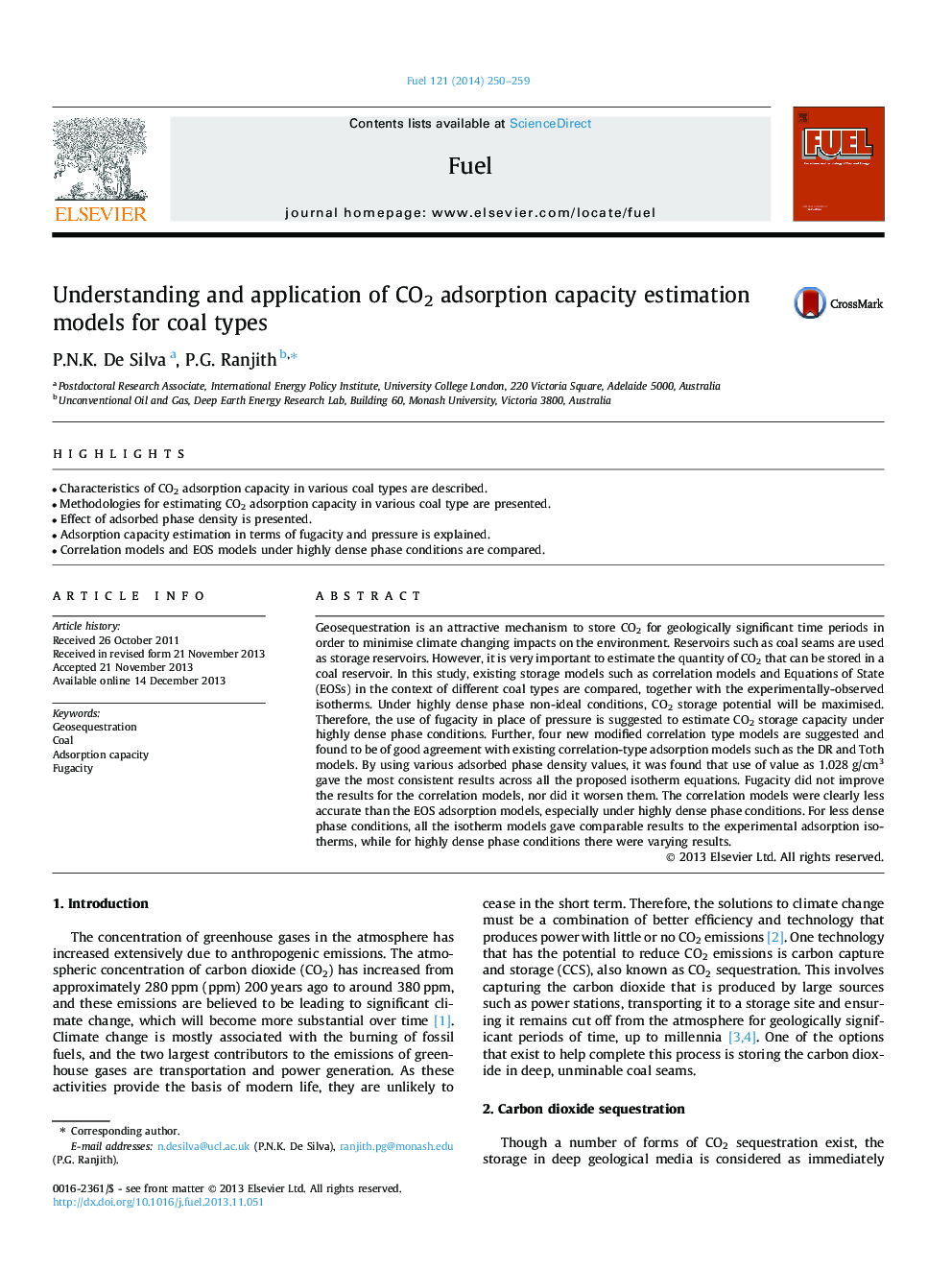| کد مقاله | کد نشریه | سال انتشار | مقاله انگلیسی | نسخه تمام متن |
|---|---|---|---|---|
| 206257 | 461151 | 2014 | 10 صفحه PDF | دانلود رایگان |

• Characteristics of CO2 adsorption capacity in various coal types are described.
• Methodologies for estimating CO2 adsorption capacity in various coal type are presented.
• Effect of adsorbed phase density is presented.
• Adsorption capacity estimation in terms of fugacity and pressure is explained.
• Correlation models and EOS models under highly dense phase conditions are compared.
Geosequestration is an attractive mechanism to store CO2 for geologically significant time periods in order to minimise climate changing impacts on the environment. Reservoirs such as coal seams are used as storage reservoirs. However, it is very important to estimate the quantity of CO2 that can be stored in a coal reservoir. In this study, existing storage models such as correlation models and Equations of State (EOSs) in the context of different coal types are compared, together with the experimentally-observed isotherms. Under highly dense phase non-ideal conditions, CO2 storage potential will be maximised. Therefore, the use of fugacity in place of pressure is suggested to estimate CO2 storage capacity under highly dense phase conditions. Further, four new modified correlation type models are suggested and found to be of good agreement with existing correlation-type adsorption models such as the DR and Toth models. By using various adsorbed phase density values, it was found that use of value as 1.028 g/cm3 gave the most consistent results across all the proposed isotherm equations. Fugacity did not improve the results for the correlation models, nor did it worsen them. The correlation models were clearly less accurate than the EOS adsorption models, especially under highly dense phase conditions. For less dense phase conditions, all the isotherm models gave comparable results to the experimental adsorption isotherms, while for highly dense phase conditions there were varying results.
Journal: Fuel - Volume 121, 1 April 2014, Pages 250–259